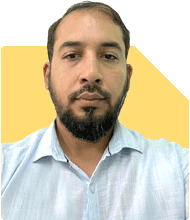Can we afford boarding school for kids without impacting retirement, higher education and house goals?
Ramalingam Kalirajan |7167 Answers |Ask -Follow
Mutual Funds, Financial Planning Expert - Answered on Nov 28, 2024
He has an MBA in finance from the University of Madras and is a certified financial planner.
He is the director and chief financial planner at Holistic Investment, a Chennai-based firm that offers financial planning and wealth management advice.... more

Hello sir, we are a 42 years old couple with 2 kids( 12 and 10 years old)with in hand salary of 6.5L in hand post tax. We have current savings of 1.2 Cr in equity, 55L in debt, 20L in gold, 25L in NPS and 2.5 cr in real estate (which we don't consider as liquid). Our primary target is around 5cr corpus for retirement around 60 years of age, 4cr for kids higher education,1cr for marriage and a house after 15years approx. Currently we are able to invest 2L/ month in MF, 30k/month in debt and 1 L/month in NPS. We have an EMI of 1L/ month for 6 years for the loan of a commercial property which is not giving any rent at present.We have sufficient health and life insurance.Till now our goals seemed reachable but now we are having thoughts of sending both kids to boarding which will cost us around 1L monthly for around 6 years with 6 %inflation extra each year costing us around 80-85L extra. Can we afford this extra expense without compromising our other goals.Kindly advice.
You have Rs 1.2 crore in equity, Rs 55 lakh in debt, Rs 20 lakh in gold, Rs 25 lakh in NPS, and Rs 2.5 crore in real estate.
A monthly savings capacity of Rs 3.3 lakh is impressive, even with a Rs 1 lakh EMI.
Adequate health and life insurance adds financial security.
Evaluation of Goals
Retirement Corpus
Your target of Rs 5 crore by 60 years seems achievable with current savings.
Continuing with Rs 2 lakh monthly in mutual funds (MFs) and Rs 1 lakh in NPS will help.
Children’s Higher Education
Rs 4 crore for higher education can be managed.
Your equity exposure supports long-term growth.
Marriage Expenses
A target of Rs 1 crore for marriages is realistic.
Investments in debt and gold provide stability for such goals.
Buying a House
A house after 15 years will need detailed planning.
A mix of equity and debt over time can address this goal.
Impact of Boarding School Expense
Boarding will cost Rs 80-85 lakh over six years, considering 6% inflation.
This is a significant expense during a critical saving period.
Possible Adjustments
Reassess Short-Term Investments
Reduce monthly MF investment by Rs 1 lakh temporarily.
Divert this amount for boarding expenses.
Prioritise Debt Investments
Continue Rs 30,000 monthly in debt funds.
Use this allocation later for school-related costs.
Revisit Commercial Property
Check potential for renting out the property.
Even a partial rental can ease the EMI burden.
Utilise Surplus Assets
Gold can be partially liquidated in emergencies.
Avoid selling equity to preserve long-term growth.
Insights on Mutual Funds and NPS
Actively managed mutual funds outperform index funds in Indian markets.
Professional fund management adapts to market changes effectively.
NPS is tax-efficient for retirement planning.
Continue the Rs 1 lakh monthly contribution to maximise benefits.
Tax Implications
Be mindful of new taxation rules on MFs.
LTCG on equity above Rs 1.25 lakh is taxed at 12.5%.
Debt fund gains are taxed as per your income slab.
Strategic Plan
Allocate Rs 1 lakh monthly from MF contributions for school fees.
Invest Rs 1 lakh in equity MFs and Rs 30,000 in debt MFs monthly.
Retain the NPS contribution of Rs 1 lakh per month.
Alternative Options
Evaluate less expensive boarding schools without compromising quality.
Explore scholarships or partial funding options.
Avoid real estate investments for liquidity concerns.
Emergency Fund Planning
Ensure six months’ expenses as an emergency fund.
Keep this amount in liquid or debt funds for easy access.
Final Insights
You can afford the boarding school expense with minor adjustments.
Maintain focus on long-term goals with disciplined investments.
Revisit your plan every two years to ensure alignment.
Best Regards,
K. Ramalingam, MBA, CFP,
Chief Financial Planner,
www.holisticinvestment.in
https://www.youtube.com/@HolisticInvestment
Best Regards,
K. Ramalingam, MBA, CFP,
Chief Financial Planner,
www.holisticinvestment.in
https://www.youtube.com/@HolisticInvestment
You may like to see similar questions and answers below
Ramalingam Kalirajan |7167 Answers |Ask -Follow
Mutual Funds, Financial Planning Expert - Answered on Jun 18, 2024
Ramalingam Kalirajan |7167 Answers |Ask -Follow
Mutual Funds, Financial Planning Expert - Answered on Aug 10, 2024
Ramalingam Kalirajan |7167 Answers |Ask -Follow
Mutual Funds, Financial Planning Expert - Answered on Oct 07, 2024
Milind Vadjikar |714 Answers |Ask -Follow
Insurance, Stocks, MF, PF Expert - Answered on Oct 08, 2024
Milind Vadjikar |714 Answers |Ask -Follow
Insurance, Stocks, MF, PF Expert - Answered on Nov 21, 2024
Milind Vadjikar |714 Answers |Ask -Follow
Insurance, Stocks, MF, PF Expert - Answered on Nov 28, 2024
Milind Vadjikar |714 Answers |Ask -Follow
Insurance, Stocks, MF, PF Expert - Answered on Nov 28, 2024
Ramalingam Kalirajan |7167 Answers |Ask -Follow
Mutual Funds, Financial Planning Expert - Answered on Nov 28, 2024
Milind Vadjikar |714 Answers |Ask -Follow
Insurance, Stocks, MF, PF Expert - Answered on Nov 28, 2024
Aasif Ahmed Khan |163 Answers |Ask -Follow
Tech Career Expert - Answered on Nov 28, 2024
Aasif Ahmed Khan |163 Answers |Ask -Follow
Tech Career Expert - Answered on Nov 28, 2024
Aasif Ahmed Khan |163 Answers |Ask -Follow
Tech Career Expert - Answered on Nov 28, 2024
Aasif Ahmed Khan |163 Answers |Ask -Follow
Tech Career Expert - Answered on Nov 28, 2024
Aasif Ahmed Khan |163 Answers |Ask -Follow
Tech Career Expert - Answered on Nov 28, 2024



















